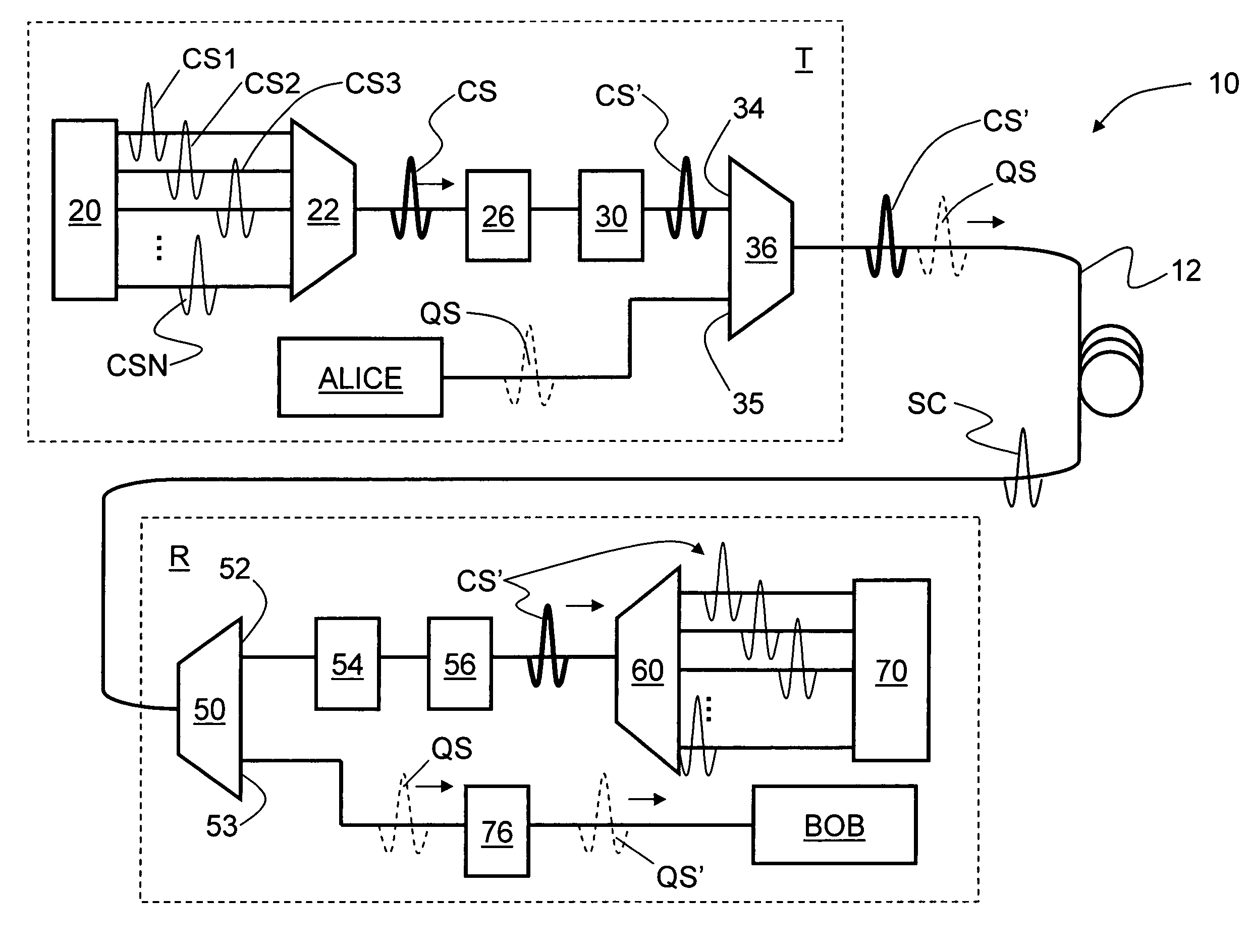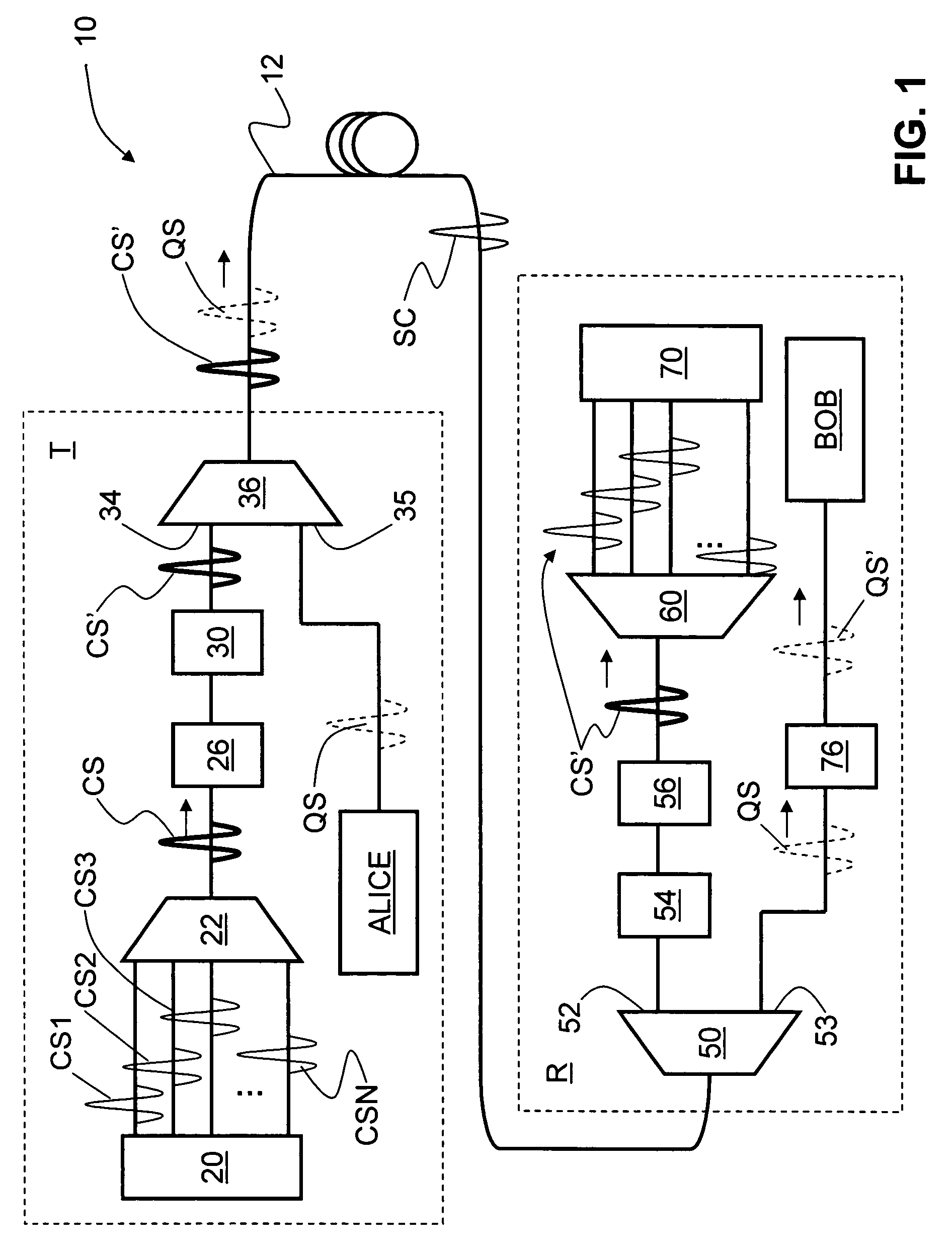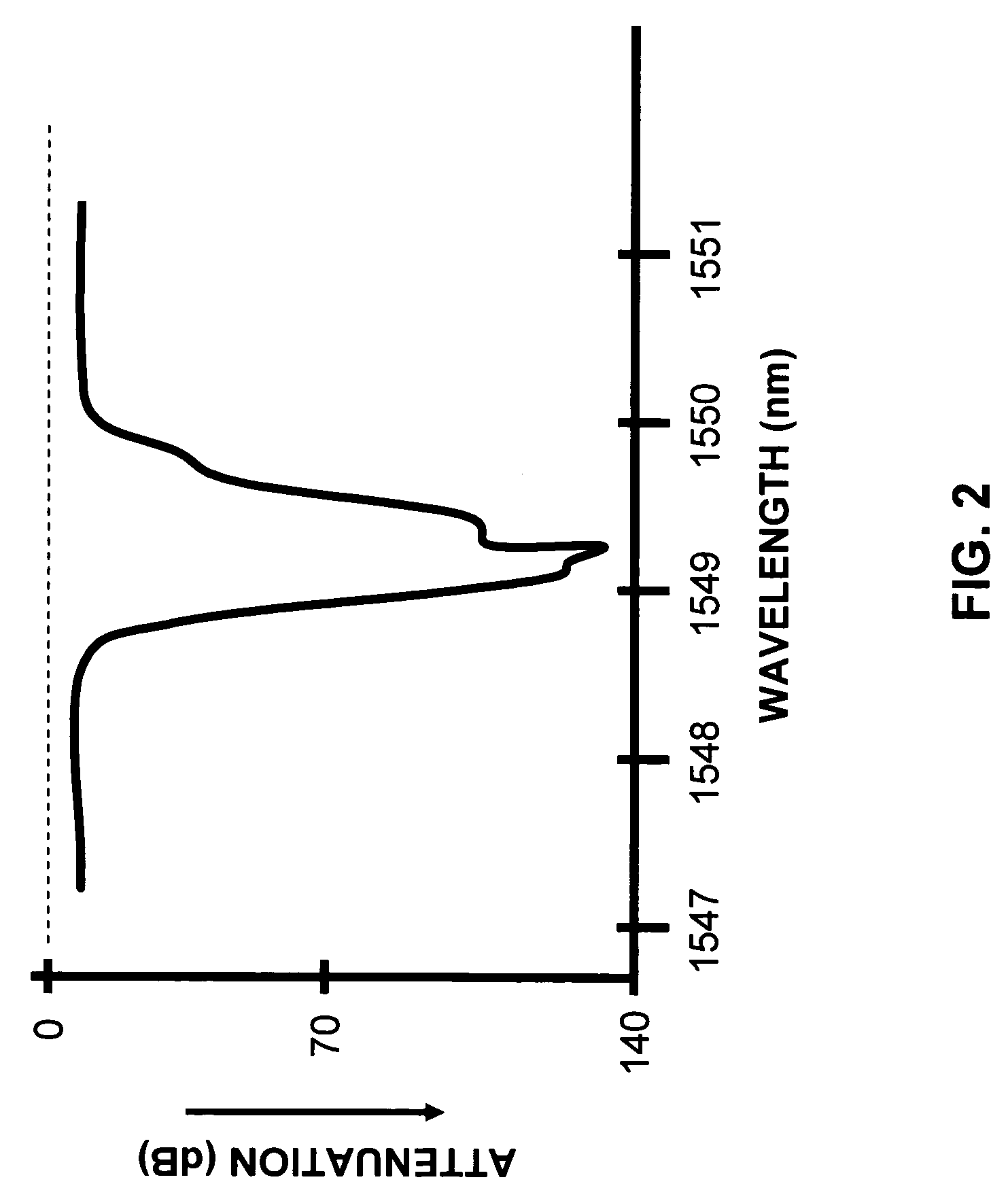Systems and methods for transmitting quantum and classical signals over an optical network
a quantum and optical network technology, applied in the field of optical networks and quantum cryptography, can solve the problems of introducing errors that reveal her presence, affecting the detection of quantum signals, and complicating the qkd process, so as to reduce optical noise
- Summary
- Abstract
- Description
- Claims
- Application Information
AI Technical Summary
Benefits of technology
Problems solved by technology
Method used
Image
Examples
Embodiment Construction
[0017]The present invention includes systems and methods that allow for the transmission of both quantum (optical) signals QS at quantum signal wavelength and high-speed classical (optical) signals CS at classical signal wavelength over an optical fiber network, wherein the quantum and classical signal wavelengths are relatively close to one another. In a preferred embodiment, the optical coupling between elements as referred to below is accomplished using sections of optical fiber.
[0018]FIG. 1 is a schematic diagram of an optical network 10 according to the present invention. Network 10 includes a transmitter side T and a receiver side R optically coupled by a transmission optical fiber 12. On receiver side R, network 10 includes a multi-wavelength transmitter 20 optically coupled to a dense wavelength division multiplexer (DWDM) 22, which in turn is optically coupled to an erbium-doped fiber amplifier (EDFA) 26. EDFA 26 is optically coupled to a “deep notch” optical filter 30 havi...
PUM
 Login to View More
Login to View More Abstract
Description
Claims
Application Information
 Login to View More
Login to View More - R&D
- Intellectual Property
- Life Sciences
- Materials
- Tech Scout
- Unparalleled Data Quality
- Higher Quality Content
- 60% Fewer Hallucinations
Browse by: Latest US Patents, China's latest patents, Technical Efficacy Thesaurus, Application Domain, Technology Topic, Popular Technical Reports.
© 2025 PatSnap. All rights reserved.Legal|Privacy policy|Modern Slavery Act Transparency Statement|Sitemap|About US| Contact US: help@patsnap.com



